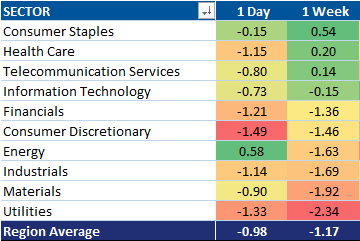As we never tire of pointing out, the
massive levels of intangible assets on multinational corporations' balance sheets is one the most overlooked drivers of profitability by the investor community. Since the early 1970's when the information and communication technology (ICT) revolution began there has been a dearth of information for investors regarding a company's innovative activities. This lack of information has been partially caused by the (in hindsight) oddly timed decision by the Financial Accounting Standards Board (FASB) in 1974 to force companies to expense all research and development (R&D) costs in the current year. They also eliminated the option for companies to use their discretion in capitalizing R&D as they saw fit (
see SFAS #2). Since that ruling, there has been copious amounts of research into this topic on whether or not innovative activities are investments (if you like to read academic research please contact us for some of our favorite pieces on the topic). As regular readers know, we firmly believe that a company's innovative activities is an investment in the future and our
Knowledge Leader Indexes have shown that
knowledge continues to be an undervalued asset.
The research over the past 40 years have identified five different categories of intangible assets: 1) computerized information 2) scientific R&D 3) non-scientific R&D 4) brand equity 5) firm-specific resources. For our post today, we wanted to look #4 and #5, brand equity and firm-specific resources, which are sometimes combined into a category called economic competencies.
Firm-specific resources primarily refers to investments companies make in their employees. Worker training programs are vital in order to speed up the learning curve of new employees and make current employees more productive in order to produce "more with less". Brand equity is the knowledge and value embedded in brand awareness and recognition. A positive association of a brand has become ever more important as the marketplace for goods has gone global. Outside of a few select goods and services, an inept local producer can no longer remain competitive simply due to the fact that he or she is located closest to the end consumer. Competition is fierce and there has been a premium placed on quality and consistency by many consumers. This means that brand equity is more important than ever. Building brand equity isn't just about portraying a message to potential new consumers, it is about reinforcing the message about utility and quality to current customers so that they continue coming back to the product again and again. Over time and with continual reinvestment, these intangible investments create a unique economic asset that a company uses to increase future cash flows. Perhaps no company has better shown the economic value of brand building as the Coca-Cola Company (Ticker: KO) has.
Everyone who has ever watched a Super Bowl knows that KO has been a believer in the economic value of brand building for a long time. However, it may be a surprise to know that KO has an extensive employee training program as well. KO's employee training program is called Coca-Cola University. This curriculum "provides a wide range of courses through classroom learning, e-learning and field training to help associates develop personally and professionally. [Coca-Cola University's] learning portfolio focuses on leadership; marketing; human rights; ethics and compliance; diversity; sustainability; finance; and other competencies." According to KO's website, more than 27,000 associates participated in 1,720 classroom sessions worldwide and 39,100 participated in e-learning courses (for more information
click here). KO has spent billions of dollars on these intangible investments and spent an industry-leading 11.3% of its sales on brand building and firm-specific resources last year. Over the past 20 years, KO has invested almost 12% of its sales in intangible assets on an annual basis. This may come as a surprise to many but KO actually spends over twice as much on intangible investments as they do on traditional tangible investments.
Intangible-Adjusted Investment Profile

This focus on intangible investments has led to long-term asset of $9 billion at depreciated, historic cost on KO's balance sheet according to our intangible-adjusted data. This is a rather sizeable 10.5% of KO's intangible-adjusted balance sheet that currently is completely overlooked by investment community. Brand building and firm specific resources tend to have a quicker depreciation rate than R&D or tangible investments. In accordance with the latest research, we depreciate these intangible assets at a three year rate with zero residual value.
Intangible-Adjusted Balance Sheet

Over the past 20 years, KO's investments in intangibles has helped it maintain a large global market share and grow sales at an industry best 6.4% per year. KO has increased its earnings per share at 8% per year, book value per share at 9.9% and cash flow per share at 7.3%. All the while, it has increased its dividend by 9.6% per year for the past two decades.
Intangible-Adjusted Growth Rates

We frequently mention Warren Buffet's "economic moat" concept. It is term that refers to a company's ability to sustain competitive advantages over its competitors and protect its long-term profits and market share. This is exactly what an investment in an intangibles asset delivers. It allows companies to have a self-financed, self-created, unique economic asset in order to maintain its competitive advantage and long-term profits. Most managements around the world understand that investing in innovation activities is not only important for future growth but it is in fact a necessity in order to simply stay in business. However, traditional conservative accounting practices continue to treat these investments in the future as current period expenses. This creates a large information mismatch between insiders and outsiders and this mismatch can
be exploited if one shifts their focus to unearthing the value of intangibles.






























































